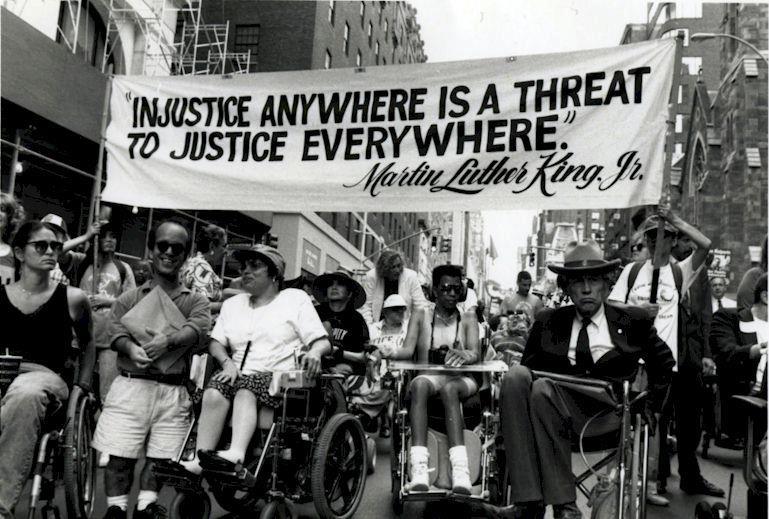Neil Young’s 1989 “comeback album” Freedom is probably Neil Young’s best work, and I think it should be considered in the rare category, “best Folk rock albums ever.”
Freedom opens with an acoustic performance of “keep on rawkin in the free werld” live in concert (cut from an outdoor set he did at Jones Beach, New York). Though concert recordings can be annoying with the crowd noise and whatnot, and this is no exception, bookending the beginning and end of an album with acoustic and electric versions of the album’s lead single or most representative song is a Neil Young tradition. In addition to that, the following track, 2 – “Crime In The City (Sixty To Zero Part 1)”, has simple guitar lines that mirror “Keep on Rockin’ In The Free World,” so leading off with it established something Young builds on…
One track lends itself to the next, music and lyrics setting up a foundation for the next song. This “album as a cohesive whole” isn’t seen as often today, nowadays an “album” is more a “best of” collection of an artist’s recent songs, selection of stuff recorded over a certain timeframe, or worse, hit single… filler… random crap… potential single #2… filler… more filler, then please become a single #3.
One of the things that takes a record from great album to one of the “best evaaaaar” is its “as a whole” impact. Though Freedom‘s wholeness isn’t as clear/blatant as a concept album’s with a single unifying theme or story, the songs unite loosely around ideas of political, personal, and relationshipal freedom. Not just the songs themselves but their sequence, how one song sets up the next, matters here, and I definitely give more points for the whole album being a canvas.
Favorite moments:
As mentioned above, “Keep on Rockin’ In The Free World” is an excellent lead-off for the very related second song “Crime In The City (Sixty To Zero Part 1).” Like its predecessor, “Crime in the City” throws out vignettes about street-level reality in 1980s North America or “the free world,” backed by simple but powerful guitar lines. Then, Young adds more: electric guitar compliments the acoustic guitar that’s driving the longer, almost spoken word-vignettes, and following the second vignette about a producer there’s a touch of pedal steel guitar, then separating the third and fourth stories more pedal steel guitar in the fill, then the fill between stories four and five is a sweeping swirl of pedal steel guitar, almost like the Hawaiian-style of steel guitar, then the final lengthy musical break brings in subtle saxophone lines that mirror the guitar lines. All brilliantly done, and the vignettes or dispatches from the front lines of urban decay are touching and real. The third story even has you sympathizing with the corrupt 1980s cop on the beat as he improvises survival amidst the inner city hellscape.
Song #3 – “Don’t Cry” is grunge rock in its purest form, raw guitar feedback-y as hell backing raw emotional lyrics, one magnifying the other. If songs like this don’t make the point that Neil Young is one of the founding fathers of grunge, that grunge’s Mt. Rushmore would have Kurt Cobain, Eddie Vedder, Black Francis/Pixies, and Neil Young, then Neil Young’s 1995 album with Pearl Jam, Mirror Ball, will hit you with that point until it’s blatantly obvious.
“Hangin’ on a limb” is #4, an achingly beautiful song of love and loss and freedom with Linda Ronstadt’s backing vocals subtle and muted but not too muted, just right. The lyrics say a lot in a few subtle lines:
And when the melody
Through the window called
It echoed in the courtyard
And whispered in the halls
He played it through the night
She knew he had to go
There was something about freedom
He thought he didn’t know.
and though their love was hangin’ on a limb,
she taught him how to dance
The part about a melody’s infectious whispers changing lives is striking, and this, along with the lines in 7. “Someday” reminding us where men’s labor goes “Workin’ on that great Alaska pipeline / Many men were lost in the pipe / They went to fuelin’ cars / now smog might turn to stars… Someday” brings it home for me… We need great songwriting like this to express human life and its intricate adaptations to horror and beauty and everything.
I judge everything, with each element, instrument-playing, musical arrangement, lyrics, etc., all having weight. My music reviews don’t hinge solely or predominantly on vocals, which is mostly how music is judged today in the age of The Voice, X-Factor, American Idol, et al.
Neil Young’s high, abrasive countertenor might be off-putting for some, but I give his 1989 comeback album Freedom five out of five rabbits because I “listen small,” catching the small details and beautiful things. This album is like a small, intricately arranged piece of jewelry with each element subtle and measured to never be gaudy or overkill-y.
If you like folk rock and/or country love songs and/or the grunge sound, check out Freedom.
You can listen to the album here for free (via Spotify) or above (also via Spotify).
5/5

SCORE: FIVE BUNS
—Nick
